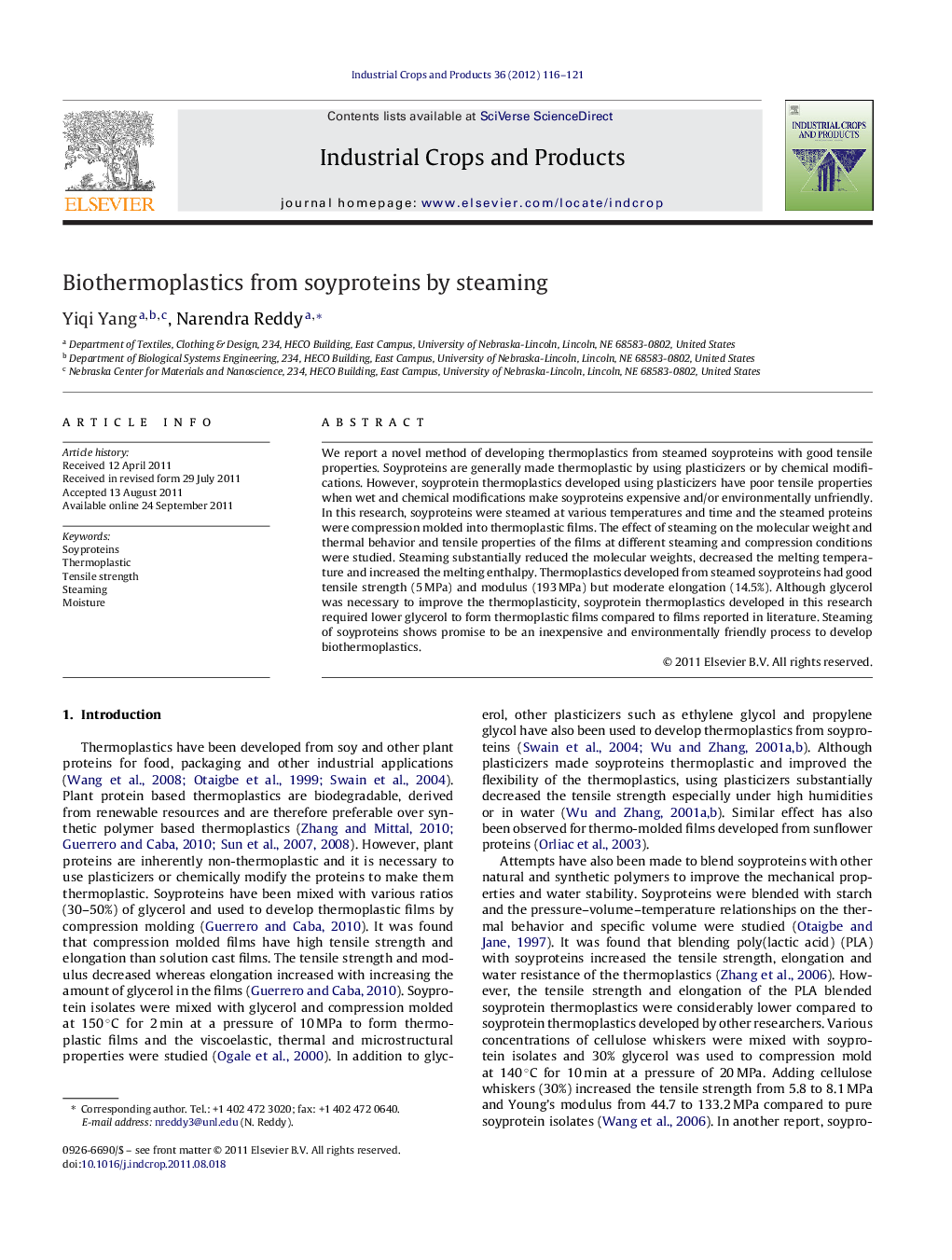| کد مقاله | کد نشریه | سال انتشار | مقاله انگلیسی | نسخه تمام متن |
|---|---|---|---|---|
| 4514362 | 1322209 | 2012 | 6 صفحه PDF | دانلود رایگان |

We report a novel method of developing thermoplastics from steamed soyproteins with good tensile properties. Soyproteins are generally made thermoplastic by using plasticizers or by chemical modifications. However, soyprotein thermoplastics developed using plasticizers have poor tensile properties when wet and chemical modifications make soyproteins expensive and/or environmentally unfriendly. In this research, soyproteins were steamed at various temperatures and time and the steamed proteins were compression molded into thermoplastic films. The effect of steaming on the molecular weight and thermal behavior and tensile properties of the films at different steaming and compression conditions were studied. Steaming substantially reduced the molecular weights, decreased the melting temperature and increased the melting enthalpy. Thermoplastics developed from steamed soyproteins had good tensile strength (5 MPa) and modulus (193 MPa) but moderate elongation (14.5%). Although glycerol was necessary to improve the thermoplasticity, soyprotein thermoplastics developed in this research required lower glycerol to form thermoplastic films compared to films reported in literature. Steaming of soyproteins shows promise to be an inexpensive and environmentally friendly process to develop biothermoplastics.
Figure optionsDownload as PowerPoint slideHighlights
► We describe a novel method of developing thermoplastics from soyprotein by steaming.
► Steaming decreases molecular weight, melting point but increases melting enthalpy.
► Thermoplastics from steamed soyprotein have good tensile properties.
Journal: Industrial Crops and Products - Volume 36, Issue 1, March 2012, Pages 116–121